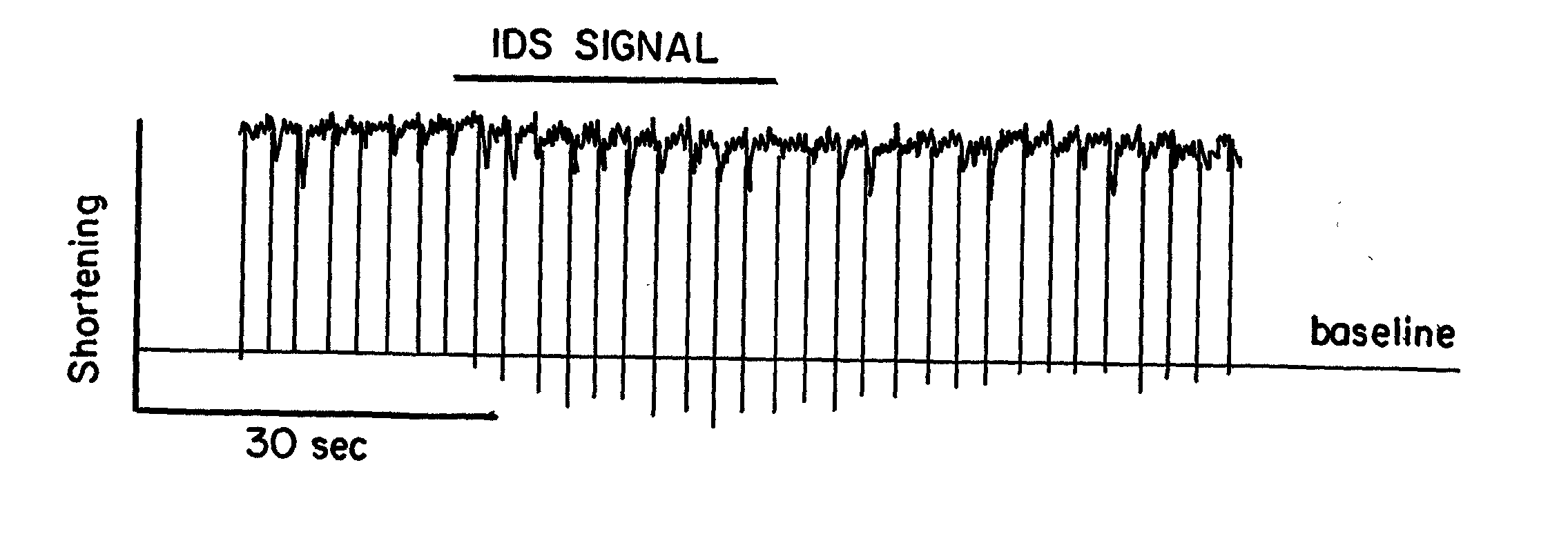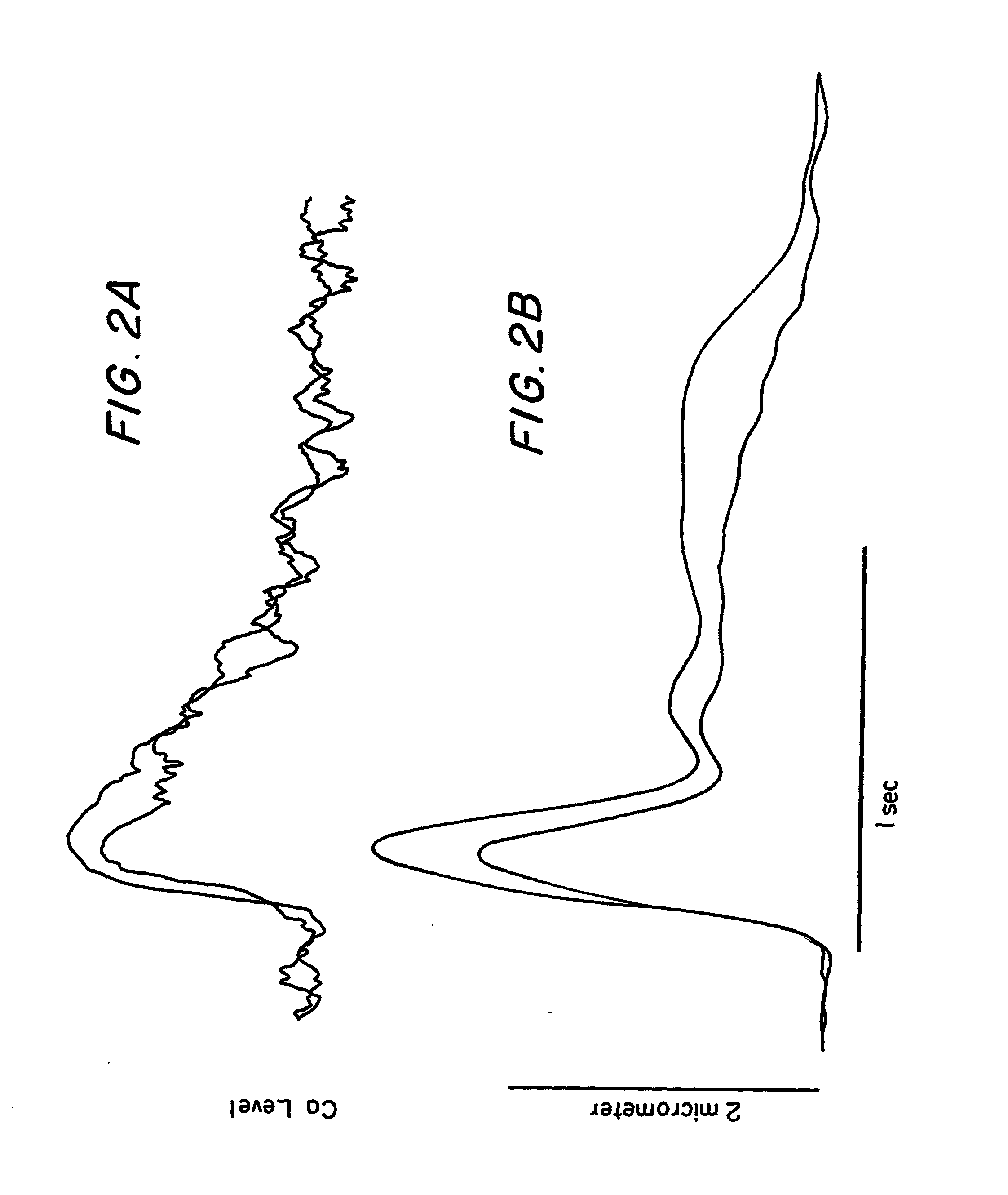Modulation of intracellular calcium concentration using non-excitatory electrical signals applied to the tissue
a non-excitatory electrical signal and calcium concentration technology, applied in electrotherapy, heart stimulators, therapy, etc., can solve the problems of cardiac output reduction, cardiac output reduction, normal regulatory mechanisms may be damaged, etc., and achieve the effect of increasing the contractility of the heart and increasing the systolic pressure generated by the hear
- Summary
- Abstract
- Description
- Claims
- Application Information
AI Technical Summary
Benefits of technology
Problems solved by technology
Method used
Image
Examples
Embodiment Construction
[0039] This invention is designed to modulate intracellular calcium concentration in a biological tissue using a non-excitatory electrical signal (IDS). In particular, the invention relates to the modulation of the intracellular calcium in cardiac muscle cells and thus the modulation of cardiac contractility. According to this invention a non-excitatory electrical field, current or voltage is passed through the tissue or in its proximity, resulting in either changing trans-membranal calcium ion fluxes or an intracellular calcium stores content. In another aspect of the invention the electrical field may interfere / enhance the affinity of intracellular calcium binding elements to calcium. In a further aspect the rise in intracellular calcium concentrations may initiate a cascade of events including, but not limited to, phosphorylation / dephosphorylation, gene transcription, and / or post translation modification.
[0040] Systems are disclosed which utilize the application of electrical cu...
PUM
 Login to View More
Login to View More Abstract
Description
Claims
Application Information
 Login to View More
Login to View More - R&D
- Intellectual Property
- Life Sciences
- Materials
- Tech Scout
- Unparalleled Data Quality
- Higher Quality Content
- 60% Fewer Hallucinations
Browse by: Latest US Patents, China's latest patents, Technical Efficacy Thesaurus, Application Domain, Technology Topic, Popular Technical Reports.
© 2025 PatSnap. All rights reserved.Legal|Privacy policy|Modern Slavery Act Transparency Statement|Sitemap|About US| Contact US: help@patsnap.com



